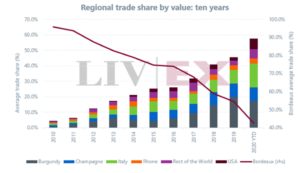This year, for the first time, Burgundian producer Maison Edouard Delaunay is allowing a limited number of private clients and investors the chance to bid at this spring’s 60th Hospices de Nuits Wine Auction which will be held March 14th, 2021.
Since 1961, this “en primeur” sale of 228-litre barrels has been solely for trade buyers, until this year, the négociant will allow a number of private collectors to bid for the first time.
Prospective buyers can purchase a minimum of 24 bottles. They will be welcome (Covid restrictions dependent) to stay at Château de Gilly on Friday, March 12, with a visit to the Maison Delaunay winery on Saturday and then attend a tasting and lunch at the Hospices de Nuits on the day of the auction, Sunday, March 14, 2021.
The wines sold will finish their aging in the cellars of Maison Edouard Delaunay, at Étang Vergy, under the supervision of cellar master Christophe Briotet, recently nominated “best winemaker in the world” by the “International Wine Challenge”.
A Historical Relationship
The historic relationship between Maison Edouard Delaunay and the Hospices de Nuits began long before the first auction in 1961, when Laurent Delaunay’s grandfather bought Hospices de Nuits wines by mutual, exclusive agreement.
The Charity – Hospices de Nuits
Hospices de Nuits consists of a working hospital, a retirement home and one of the most beautiful collections of vineyards of Nuits-Saint-Georges and the Côte de Nuits whose wines are sold at the traditional March auction.
The Hospices de Nuits was founded in 1270 and is historically older than Hospices de Beaune which was founded in 1443. The Hospices de Nuits began offering its wine at auction 60 years ago. Over the centuries the Hospice has been bequeathed numerous vineyards which today comprises of 12.5 hectares. Most of the vineyards are in Nuits-Saint-Georges, covering six parcels of village appellations and nine premier crus, and including Les Didiers.
Laurent Delaunay states: “To bid at the Hospices de Nuits combines the pleasure of buying top wines with the joy of contributing to a great charity.”
For further information, and details of how to sign up and bid https://burgundyauction.wine/






